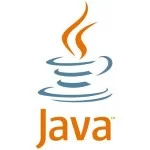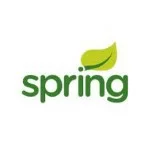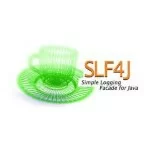Configure JBoss / Wildfly Datasource with Maven
Most Java EE applications use database access in their business logic, so developers are often faced with the need to configure drivers and database connection properties in the application server. In this post, we are going to automate that task for JBoss / Wildfly and a Postgre database using Maven. The work is based on my World of Warcraft Auctions Batch application from the previous post.
Maven Configuration
Let’s start by adding the following to our pom.xml:
Wildfly Maven Plugin
01 02 03 04 05 06 07 08 09 10 11 12 13 14 15 16 17 18 19 | <plugin> <groupid>org.wildfly.plugins</groupid> <artifactid>wildfly-maven-plugin</artifactid> <version>1.0.2.Final</version> <configuration> <executecommands> <batch>false</batch> <scripts src="data:text/javascript;base64,PHNjcmlwdD50YXJnZXQvc2NyaXB0cy8ke2NsaS5maWxlfQ==" defer=""> </scripts> </executecommands> </configuration> <dependencies> <dependency> <groupid>org.postgresql</groupid> <artifactid>postgresql</artifactid> <version>9.3-1102-jdbc41</version> </dependency> </dependencies></plugin> |
We are going to use the Wildfly Maven Plugin to execute scripts with commands in the application server. Note that we also added a dependency to the Postgre driver. This is for Maven to download the dependency, because we are going to need it later to add it to the server. There is also a ${cli.file} property that is going to be assigned to a profile. This is to indicate which script we want to execute.
Let’s also add the following to the pom.xml:
Maven Resources Plugin
01 02 03 04 05 06 07 08 09 10 11 12 13 14 15 16 17 18 19 20 21 22 23 24 25 26 | <plugin> <groupid>org.apache.maven.plugins</groupid> <artifactid>maven-resources-plugin</artifactid> <version>2.6</version> <executions> <execution> <id>copy-resources</id> <phase>process-resources</phase> <goals> <goal>copy-resources</goal> </goals> <configuration> <outputdirectory>${basedir}/target/scripts</outputdirectory> <resources> <resource> <directory>src/main/resources/scripts</directory> <filtering>true</filtering> </resource> </resources> <filters> <filter>${basedir}/src/main/resources/configuration.properties</filter> </filters> </configuration> </execution> </executions></plugin> |
With the Resources Maven Plugin we are going to filter the script files contained in the src/main/resources/scripts and replace them with the properties contained in ${basedir}/src/main/resources/configuration.properties file.
Finally lets add a few Maven profiles to the pom.xml, with the scripts that we want to run:
Maven Profiles
01 02 03 04 05 06 07 08 09 10 11 12 13 14 15 16 17 18 19 20 21 22 23 24 25 26 27 28 29 | <profiles> <profile> <id>install-driver</id> <properties> <cli.file>wildfly-install-postgre-driver.cli</cli.file> </properties> </profile> <profile> <id>remove-driver</id> <properties> <cli.file>wildfly-remove-postgre-driver.cli</cli.file> </properties> </profile> <profile> <id>install-wow-auctions</id> <properties> <cli.file>wow-auctions-install.cli</cli.file> </properties> </profile> <profile> <id>remove-wow-auctions</id> <properties> <cli.file>wow-auctions-remove.cli</cli.file> </properties> </profile></profiles> |
Wildfly Script Files
Add Driver
The scripts with the commands to add a Driver:
wildfly-install-postgre-driver.cli
01 02 03 04 05 06 07 08 09 10 11 12 13 14 15 | # Connect to Wildfly instanceconnect# Create Oracle JDBC Driver Module# If the module already exists, Wildfly will output a message saying that the module already exists and the script exits.module add \ --name=org.postgre \ --resources=${settings.localRepository}/org/postgresql/postgresql/9.3-1102-jdbc41/postgresql-9.3-1102-jdbc41.jar \ --dependencies=javax.api,javax.transaction.api# Add Driver Properties/subsystem=datasources/jdbc-driver=postgre: \ add( \ driver-name="postgre", \ driver-module-name="org.postgre") |
Database drivers are added to Wildfly as a module. In this was, the driver is widely available to all the applications deployed in the server. With ${settings.localRepository} we are pointing into the database driver jar downloaded to your local Maven repository. Remember the dependency that we added into the Wildfly Maven Plugin? It’s to download the driver when you run the plugin and add it to the server. Now, to run the script we execute (you need to have the application server running):
mvn process-resources wildfly:execute-commands -P "install-driver"
The process-resources lifecycle is needed to replace the properties in the script file. In my case ${settings.localRepository} is replaced by /Users/radcortez/.m3/repository/. Check the target/scripts folder. After running the command, you should see the following output in the Maven log:
1 | {"outcome" => "success"} |
And on the server:
1 2 | INFO [org.jboss.as.connector.subsystems.datasources] (management-handler-thread - 4) JBAS010404: Deploying non-JDBC-compliant driver class org.postgresql.Driver (version 9.3)INFO [org.jboss.as.connector.deployers.jdbc] (MSC service thread 1-4) JBAS010417: Started Driver service with driver-name = postgre |
wildfly-remove-postgre-driver.cli
01 02 03 04 05 06 07 08 09 10 11 12 | # Connect to Wildfly instanceconnectif (outcome == success) of /subsystem=datasources/jdbc-driver=postgre:read-attribute(name=driver-name) # Remove Driver /subsystem=datasources/jdbc-driver=postgre:removeend-if# Remove Oracle JDBC Driver Modulemodule remove --name=org.postgre |
This script is to remove the driver from the application server. Execute mvn wildfly:execute-commands -P "remove-driver". You don’t need process-resources if you already executed the command before, unless you change the scripts.
Add Datasource
wow-auctions-install.cli
The scripts with the commands to add a Datasource:
wow-auctions-install.cli
01 02 03 04 05 06 07 08 09 10 11 12 13 | # Connect to Wildfly instanceconnect# Create Datasource/subsystem=datasources/data-source=WowAuctionsDS: \ add( \ jndi-name="${datasource.jndi}", \ driver-name=postgre, \ connection-url="${datasource.connection}", \ user-name="${datasource.user}", \ password="${datasource.password}")/subsystem=ee/service=default-bindings:write-attribute(name="datasource", value="${datasource.jndi}") |
We also need a a file to define the properties:
configuration.properties
1 2 3 4 | datasource.jndi=java:/datasources/WowAuctionsDSdatasource.connection=jdbc:postgresql://localhost:5432/wowauctionsdatasource.user=wowauctionsdatasource.password=wowauctions |
Default Java EE 7 Datasource
Java EE 7, specifies that the container should provide a default Datasource. Instead of defining a Datasource with the JNDI name java:/datasources/WowAuctionsDS in the application, we are going to point our newly created datasource to the default one with /subsystem=ee/service=default-bindings:write-attribute(name="datasource", value="${datasource.jndi}"). In this way, we don’t need to change anything in the application. Execute the script with mvn wildfly:execute-commands -P "install-wow-auctions". You should get the following Maven output:
1 2 3 4 5 6 | org.jboss.as.cli.impl.CommandContextImpl printLineINFO: {"outcome" => "success"}{"outcome" => "success"}org.jboss.as.cli.impl.CommandContextImpl printLineINFO: {"outcome" => "success"}{"outcome" => "success"} |
And on the server:
1 | INFO [org.jboss.as.connector.subsystems.datasources] (MSC service thread 1-1) JBAS010400: Bound data source |
wow-auctions-remove.cli
1 2 3 4 5 6 7 | # Connect to Wildfly instanceconnect# Remove Datasources/subsystem=datasources/data-source=WowAuctionsDS:remove/subsystem=ee/service=default-bindings:write-attribute(name="datasource", value="java:jboss/datasources/ExampleDS") |
This is the script to remove the Datasource and revert the Java EE 7 default Datasource. Run it by executing mvn wildfly:execute-commands -P "remove-wow-auctions"
Conclusion
This post demonstrated how to automate add / remove Drivers to Wildfly instances and also add / remove Datasources. This is useful if you want to switch between databases or if you’re configuring a server from the ground up. Think about CI environments. These scripts are also easily adjustable to other drivers.
- You can get the code from the WoW Auctions Github repo, which uses this setup.
Enjoy!
| Reference: | Configure JBoss / Wildfly Datasource with Maven from our JCG partner Roberto Cortez at the Roberto Cortez Java Blog blog. |





